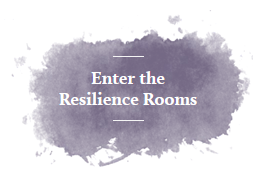I was asking my 10-year-old daughter what three wishes she would want if they were granted to her. She said to have a sister, to fly, and for the world to be free of very bad people.
When she spoke about flying, I automatically assumed she wanted to fly so that she could get to places more readily. Little did I know that she wanted to fly so that she can easily and quickly get away from anyone that was trying to harm her. When I heard that my heart sank. Two out of her three wishes included her desire to be safe and free of fear.
It’s not surprising that kids today are riddled with fear. When something occurs, it’s showcased 24/7 on all social media outlets. It scrolls in on the channels our children watch and the social media outlets they visit.
Between mass shootings, hate crimes, political unrest, and blatant human rights violations, there’s typically something disturbing or distressing that’s out there to showcase. It’s distressing to adults, even more so it’s bound to be for our children.
We have lock downs at school. Kids are instantaneously gathered to hide underneath desks and in closets, sitting ever so still, awaiting instruction if it is truly an intruder or it’s just a drill. Fire drills were scary enough at school, now kids also have to contend with the fear of being shot with AR-15’s or a pipe bomb going off in their vicinity.
As indicated, currently kids are subjected to fear-based stimuli on a continual basis. Prolonged or toxic stress in young children is known to negatively impact brain development, physical growth, and suppress the immune system.
Prolonged exposure to cortisol released during the stress response can cause change in body chemistry and in extreme cases cause adrenal fatigue. Many challenges with gastroenterological and gut issues arise from central nervous system and digestive system responses to stress. There are presently more kids complaining of anxiety related somatic symptoms such as headaches, dizziness, nausea, and stomach pains.
We often lose sight of all the precautions we take and preventative measures we put in place to ensure ours and their safety. Although these measures are necessary and are required for us to do our due diligence, do we think about the residual effects it has on the psyche and physiology of our kids? What do our children think about all of this and how is it impacting them?
According to research, they are also contending with immense academic pressure, inadequate amounts of physical activity and time to play, and an absence of comprehensive social emotional learning programs in schools to learn cognitive, social, and emotional skills such as connecting with others, problem solving, self-regulating, coping skills, among many other critical life skills.
Are we breeding a new generation of anxious kids? It most certainly seems so, considering anxiety is on the rise in the US. According to the ADAA, Anxiety affects 40 million adults in the United States age 18 and older, or 18 percent of the population. It also affects one in eight children and upwards of 20 percent of children and adolescents over their lifespan.
There’s a good reason for our concern because of the cumulative stress that continues to be insurmountable, and the lack of opportunity for kids to process their stress, and to just be.
As parents we are often in a position of feeling helpless and hopeless. We don’t know how to shield our children from being exposed to all that they are. Other than completely isolating them, we have no choice but to relent to what society has to offer. It can often feel like we are constrained and limited on offering our children safety and security, which is their fundamental right to have, and our responsibility as parents to provide for them.
We send them off with perpetual fear about whether they’ll return home safely and how they are coping with all that is thrown at them. Often, and unbeknownst to ourselves, because it doesn’t come up, they don’t share with us as often as we would like, or for some other reason, we are uninformed about of all the stress they are exposed to and are enduring.
We hug our children and hope for the best. We cannot help but feel somewhat inadequate because in the end we truly can’t secure a safe enough environment for our children. As hard as we try, and as smart and as strong as we may be, we realistically know that we can’t prevent some things from happening. As parents, facing these realities can sometimes be daunting and extremely overwhelming.
All we can do as parents is to control what we possibly can. Any way we can facilitate a reduction in stress for our children is helpful. We can make our children’s home life more secure, stable, and jovial. By allowing them to feel nurtured, validated, and have space to play and just be, we are helping them immensely.
We can also advocate for less stress in the arenas where it can be tapered. Particularly in schools, there needs to be a place for less academic pressure, more physical activity and play, and an integration of social emotional learning and mindfulness.
All of this requires a cultural shift, where systematic and structural change is initiated because of considering that our children are cognitively, physically, and emotionally in development. We need to view our children as deserving of and needing to be in as least stressful environments and situations as possible to successfully thrive on all levels.
My daughter will go to school tomorrow. Because of the atrocities in Pittsburgh over the weekend, she is bound to hear murmurings from her friends and words of encouragement from the administration at school. I expect she’ll come home and express that she wishes she could fly away. I’m not feeling very differently than she is. I wish we could fly away together.



